Welcome to lovely little Clackmannanshire. It might be Scotland’s ‘wee county’ but Clackmannanshire is a mighty one. Home to the Ochils mountains and one of Scotland’s prettiest villages, Dollar, fabulous walks, public art and the historic Tower Trail, here is how to visit Clackmannanshire.
Top things to do in Clackmannanshire
- Visit the lovely town of Dollar – stroll along the high street to find great cafes and delis, galleries, vintage shops and plenty of pubs including the Michellin-recommended Forager. Dollar is especially pretty in the spring – the River Devon is lined with stunning cherry blossoms.
- Climb up through Dollar Glen to Castle Campbell – from the village, follow the river up Dollar Glen along boardwalks above waterfalls and deep crevasses to visit the impressive Castle Campbell.
- Discover the Ochils – stretching across the north of the county are The Ochils and the smallest, Dumyat, is one of my favourite wee hills in Scotland and has wonderful views across Fife and Stirling. Feeling energic? Take on the challenge of the mighty Ben Cleuch.
- Visit the Japanese Garden at Cowden – designed by Taki Handa for Scottish Adventurer Ella Christie this beautiful garden sits in a seven acre site in the grounds of Cowden Castle.
- Explore the Tower Trail – visit four medieval towers and a manor house built by Scottish aristocrats to be close to the royal court in Stirling.
- Walk the Hillfoot Trail – hike this 16 mile route from Blairlogie to Pool of Muckhart along the base of the Ochils.
- Explore the Andy Scott Public Art Trail – visit six magnificent public art works located throughout Clackmannanshire from Andy Scott, one of the UK’s leading public artists.
- Black Devon Wetlands – this wetland managed by the RSPB is being restored as an important habitat for waders and migratory birds. Explore on a new boardwalk and raised viewing area.
- Gartmorn Dam Country Park – engineered by Sir John Erskine, the 6th Earl of Mar, to power the pumps to drain the nearby Sauchie mines, you can now explore this nature reserve on a circular path.
- Cycle the Devon Way – National Cycle Network Route 767 is a traffic-free route along the old railway line between Alloa, Tillicoutry and Dollar.
Read on for the complete guide to exploring Clackmannanshire!
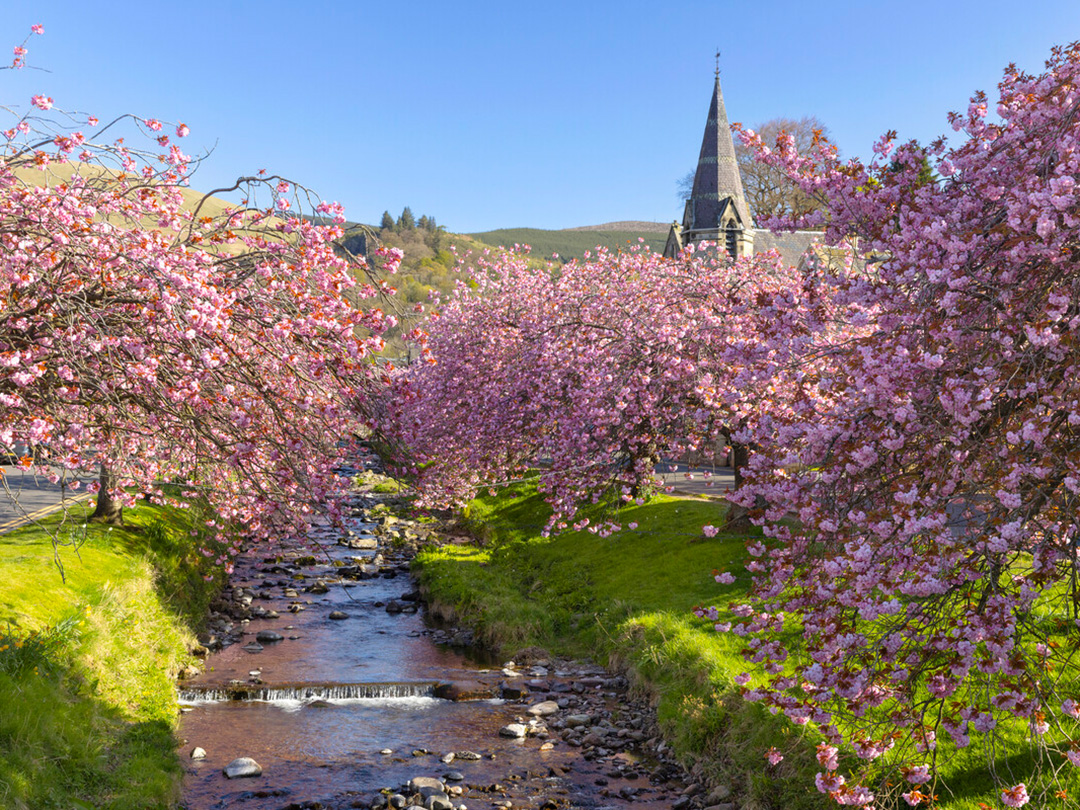
Things to know before you go to Clackmannanshire
Clackmannanshire is the smallest region of Scotland by population and nicknamed ‘the Wee County’.
The region stretches from The Ochil hills down to the Firth of Forth, with the highest point of the region at 721m (2,365 ft) at the top of Ben Cleuch.
The Ochils are part of the Ochil fault line and formed from volcanic eruptions and are split with a series of pretty glens with rivers tumbling down to the coast – two of the most well known are Alva Glen and Dollar Glen.
At the foot of the hills are the Hillfoot villages – Dollar, Blairlogie, Menstrie, Alva, Tillicoultry, Devonside, Coalsnaughton, and Muckhart.
It is thought that Clackmannanshire is either named after the pre-christian sea god deity Mannan (you can visit the Stone of Mannan in Clackmannan) after Robert the Bruce’s glove (or mannan) or, an Iron Age tribe who once inhabited the area.
Clackmannanshire is home to six tower houses, castles and baronial mansions including the mighty Castle Campbell, and the towers at Sauchie, Clackmannan and Alloa and the Menstrie Castle.
Clackmannanshire’s industrial past is everywhere – the region took most of its prosperity from its location on the River Forth and from the burns running of the Ochils, with coal mines, wool production, breweries and mills.
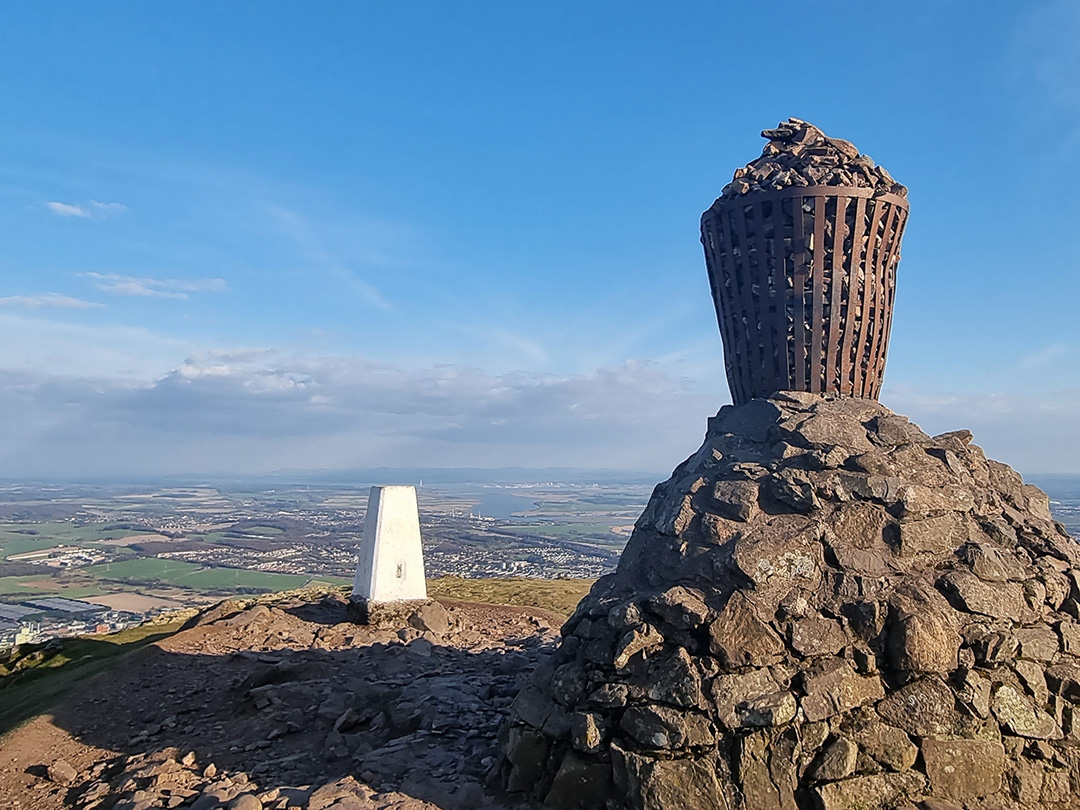
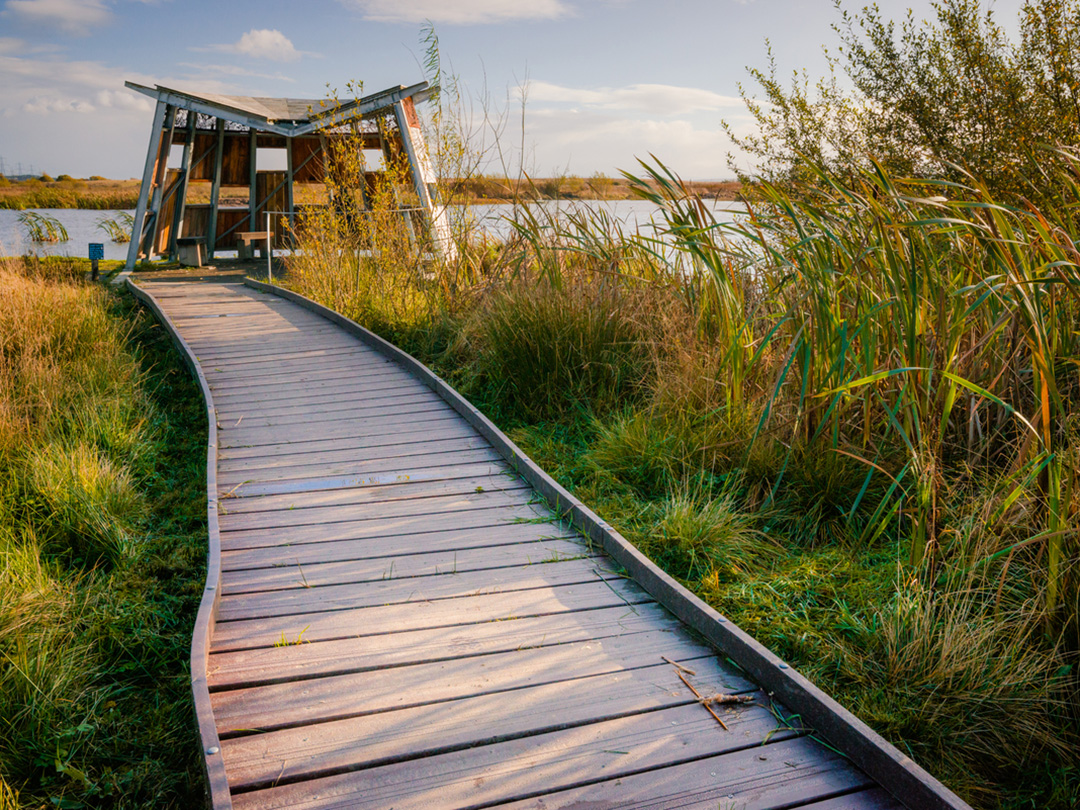
Walks in the Ochils and other Clackmannanshire strolls
The Ochils are one of my favourite hill ranges in Scotland, and Dumyat and Ben Cleuch regular walks as they have fabulous views. Here are the best walks in the Ochils.
- Climb Dumyat – one of my favourite wee hills in Scotland. A walk up the hill path is a great way to spend an afternoon and has wonderful views reaching across Fife and Stirling, the Wallace Monument, Perthshire and the Lothians to much bigger hills beyond. Read more: how to climb Dumyat.
- Ben Cleuch and The Law – the highest point of the Ochils, Ben Cleuch stands at 721m. Climb up the steep Mill Glen from Tillicoultry, then climb up over The Law to the summit of Ben Cleuch for an incredible view across to Gleneagles and the hills of Highland Perthshire. The circular route is about 8 miles if you also take in nearby Ben Ever.
- Kings Seat – climb up the pretty Mill Glen from Tillicoultry up Kings Seat with views of Castle Campbell from above. You can make this a circular walk by using the Devon Way back to the start.
- Walk the Hillfoot Trail – hike this 16 mile route from Blairlogie to Pool of Muckhart along the base of the Ochils.
- Gartmorn Dam Country Park – engineered by Sir John Erskine, the 6th Earl of Mar, to power the pumps to drain the nearby Sauchie mines, you can now explore this nature reserve on a circular path. The paths at the reservoir connect to the wider path network including Gartmorn Woods to the north – look out for red squirrels.
- Dollar Glen – explore the Dollar Glen circuit which is managed by the National Trust for Scotland along boardwalks above waterfalls and deep crevasses to visit the impressive Castle Campbell.
- Alva Glen – above the village of Alva, this deep cleft in The Ochils is filled with waterfalls, and you can explore the dams, weirs and sluice gates which are part of Clackmannanshire’s industrial past.
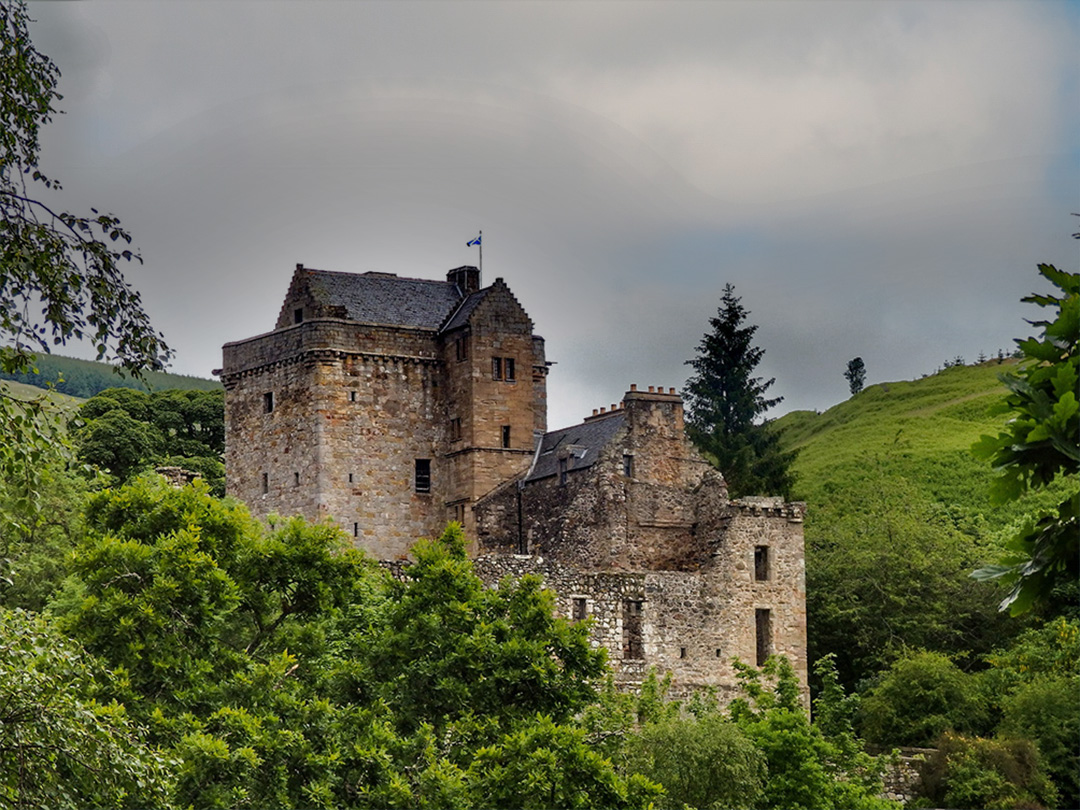
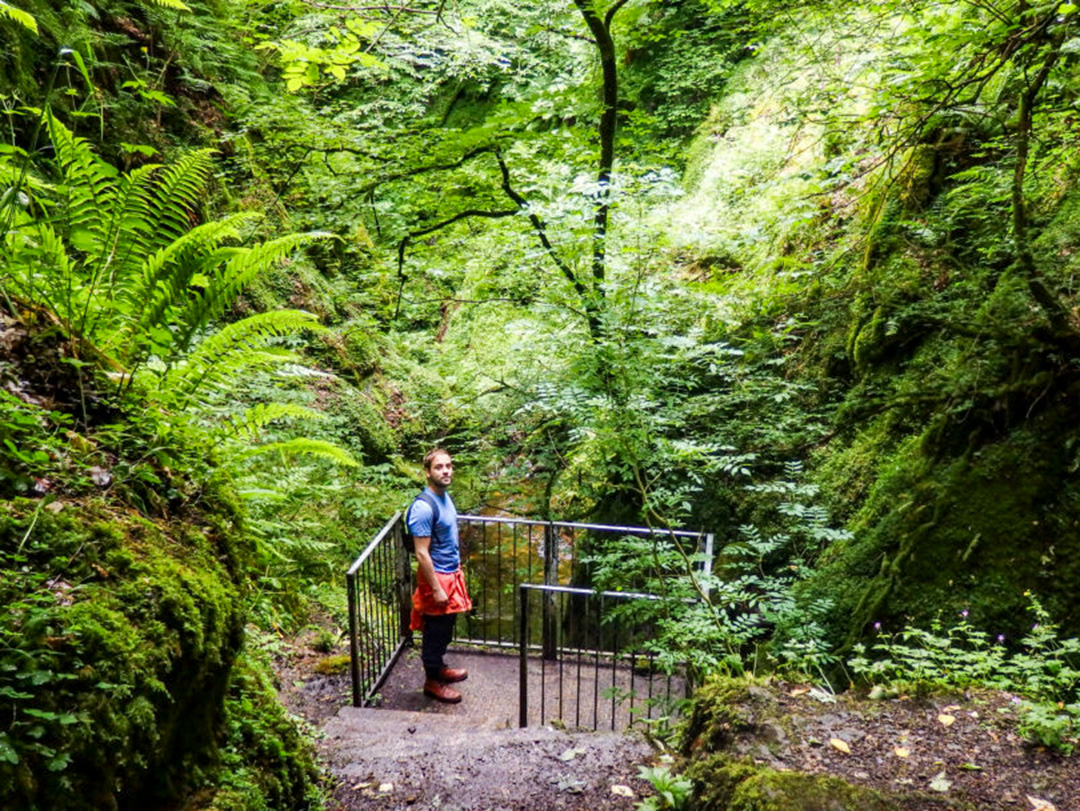
History and heritage
From tower houses to beautiful Japanese gardens, here is how to explore the heritage of Clackmannanshire.
Dollar Glen & Castle Campbell
Nestled below the dramatic Ochils mountains sits the imposing Castle Campbell. The Ochils stretch across the country from Stirling to Perth, and while not as dramatic as those mountains you will find further north, the hills act as a gateway to the Highlands, historically protecting the lower lands along the Firth of Forth from the north. Oh and the north from the British.
A rather good spot for a clan castle don’t you think?
Castle Campbell’s location high up above the deep and wooded glen is formidable and you can see why it was once called the ‘Place of Gloom’. Inherited by Clan Campbell from the Stewarts by marriage, the family changed the tower house’s name to Castle Campbell, to give it all the prestige the ‘castle’ name brings. Castle Campbell was used mainly as a base for attending parliament in Edinburgh; and as the Campbell’s Lowland country home.
Deep in the Glen beneath the castle are two chasms, carrying two burns, the Burn of Sorrows and the Burn of Care, worn out of granite rock. Such beautiful names, don’t you think?
Follow the path down into Long Bridge Gorge and you will find yourself utterly surrounded by green; tropical ferns, rich mosses, twisted branches and squawking wildlife. The glen is laid out with a serious of bridges and raised walkways which dip you down into crevices, revealing the tumbling Hempy Falls, and glimpses of the castle.
Free parking is available at the Quarry car park. The circular walk takes about 1.5 hours. Leave plenty of extra time to explore the castle. Entry to the glen is free and the castle is £7.50 or free for Historic Scotland members.
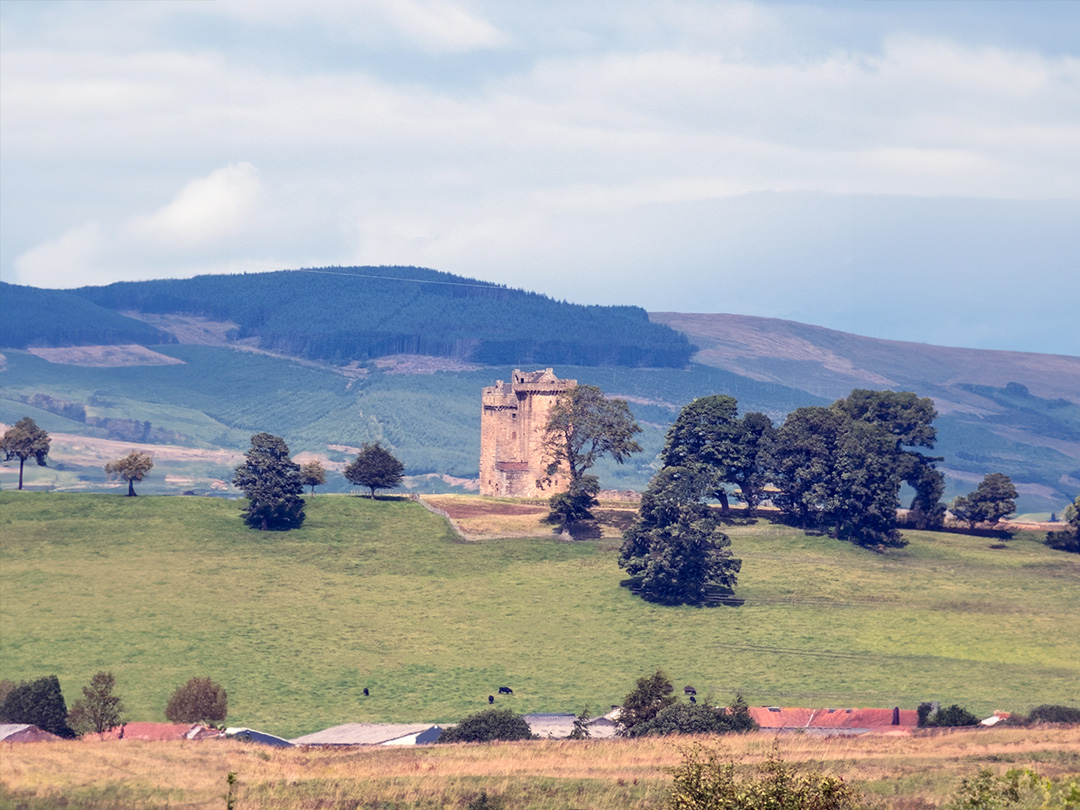
The Clackmannanshire Tower Trail
Visit four medieval towers and a manor house built in the 14th and 15th centuries by Scottish aristocrats to be close to the royal court in Stirling and as status symbols of their power.
Castle Campbell – originally built by the Stewart family, the castle was aquired by the Campbell clan by Colin Campbell, 1st Earl of Argyll who had married into the family. The castle used by the Campbell Clan as a base for attending parliament in Edinburgh and as the Campbell’s Lowland country home until 1654. Castle Campbell now is managed by Historic Environment Scotland.
Alloa Tower – Dominating the skyline of Alloa, Alloa Tower is the largest and oldest tower in Clackmannanshire. With a history spanning over 600 years, the castle was built by the Earls of Mar in the 14th century.
Clackmannan Tower – originally dating back to 1359, Clackmannan Tower was built by the Bruce family, after the lands were gifted to Sir Robert Bruce.
Sauchie Tower – in 1321, the lands of Sauchie were gifted to Henri de Annand, Sheriff of Clackmannan by King Robert Bruce. Sauchie Tower was built around 1431 by Sir James Shaw of Greenock who had married Mary, de Annand. Sir James Shaw was hugely influential in the Clackmannanshire area and his son became Governor of Stirling Castle.
Menstrie Castle – built around 1560 as a manor house by the powerful Alexander family, Menstrie Castle was once home to the Principal Secretary of State for Scotland.
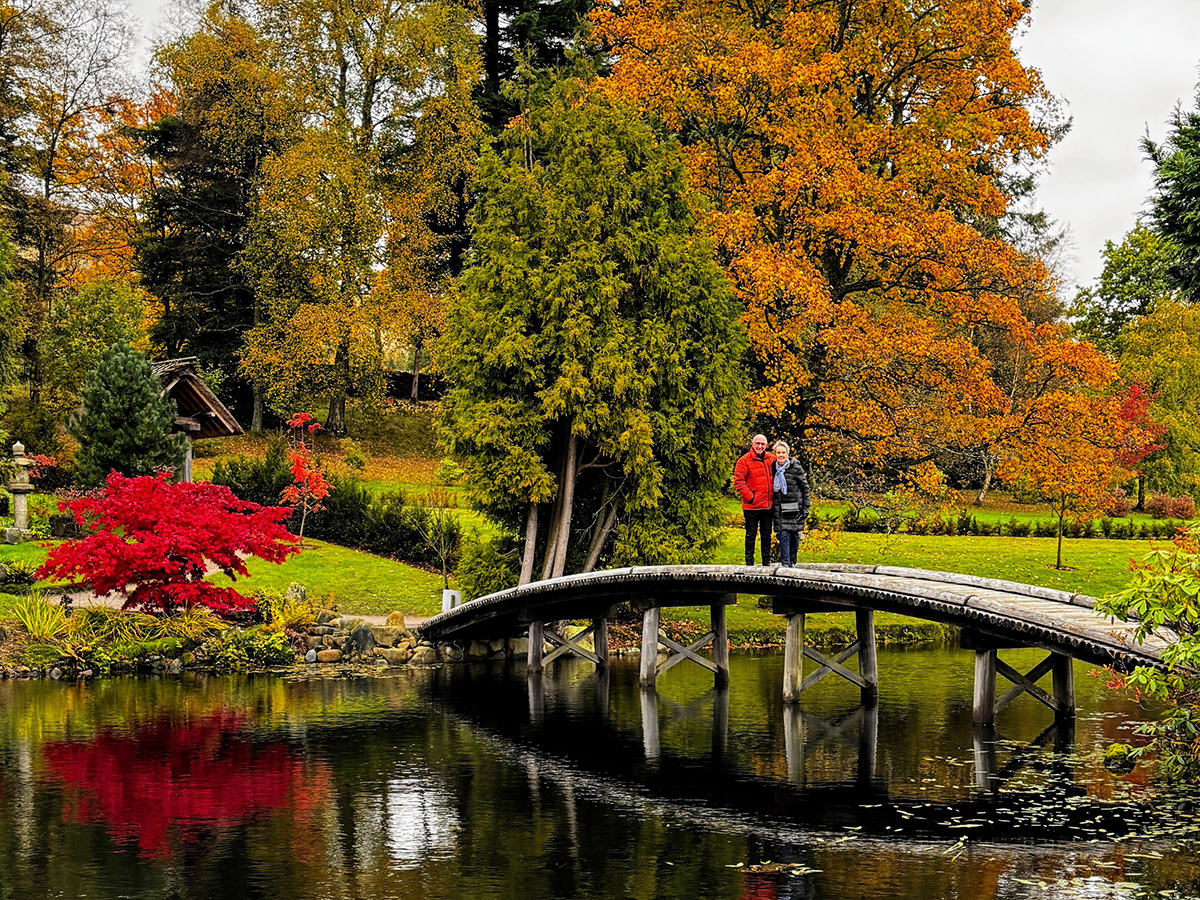
The Andy Scott Public Art Trail
Andy Scott graduated from Glasgow School of Art in 1986 and has produced over 70 pieces of public art across the world. Six of his pieces are scattered across Clackmannanshire and include The Journey’s End, I Can See for Miles, River Spirit, Air Spirit, Fox Boy, and Lifeline. Here is how to visit all of his works in Clackmannanshire:
- River Spirit – located between Sauchie and Alloa, River Spirit was the first of Andy Scott’s installations in Clackmannanshire and represents the River Forth, from which the region drew most of its success.
- Air Spirit – located between Alloa and Stirling, Air Spirit is a partner piece to River Spirit, Air Spirit looks towards the Ochils and reflects the natural landscape of Clackmannanshire.
- I Can See For Miles – located at Alloa train station, I can see for miles represents the regeneration of Alloa and features a map in a traditional flat cap (the past) looking up to a small child (the future).
- This Journey’s Ends – located at Clackmannan, the sculpture was designed to mark the opening of the new Clackmannanshire Bridge, this sculpture features two figures joining hands.
- Lifeline – the gateway to Alloa , the largest of the sculptures, Lifeline pays tribute to the emergency services.
- Fox Boy – located at Nova Scotia Gardens, Menstrie – represents the historic youth of Clackmannanshire – who were known to have kept foxes as pets!
> Find out more about the Andy Scott Public Art Trail.
Clackmannanshire Map
The fab folks at Discover Clackmannanshire have produced this great map of all the things to do in Clackmannanshire to help you explore.
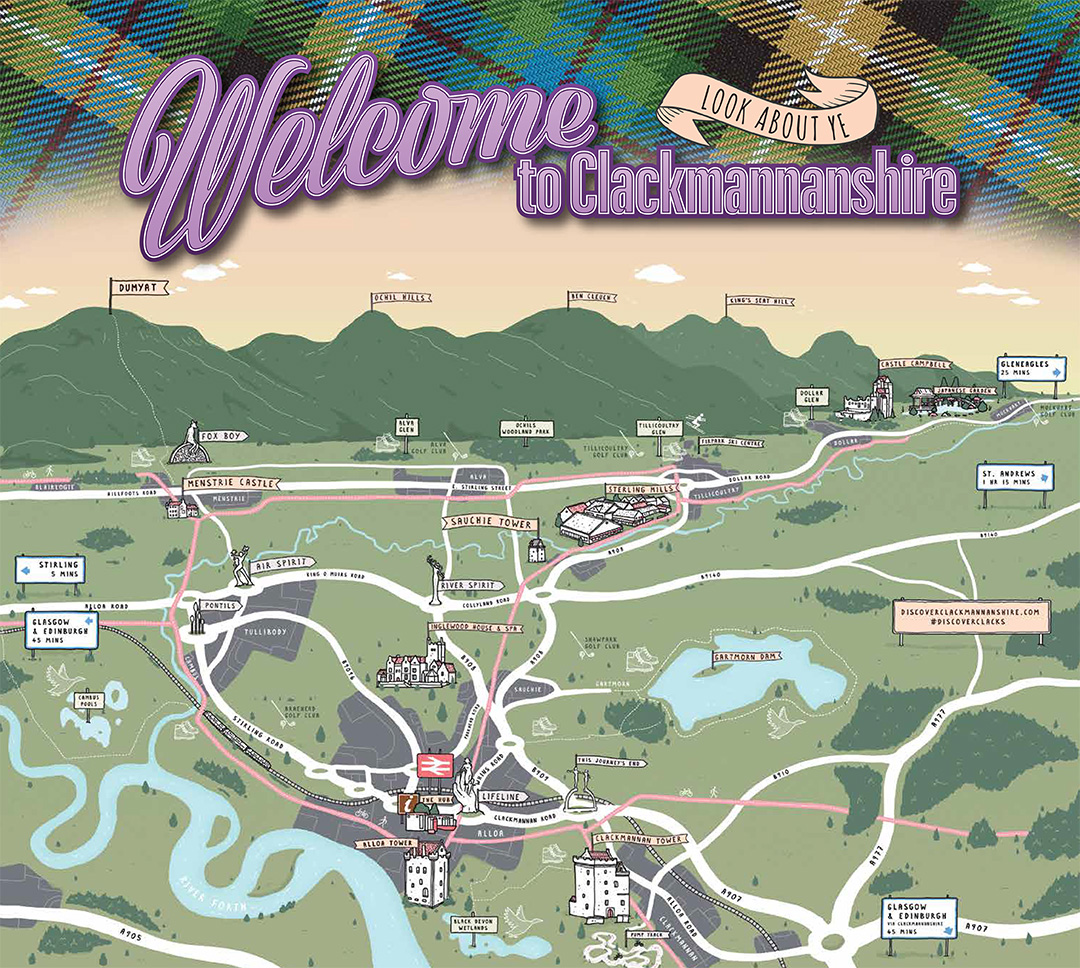
How to get to Clackmannanshire
- Get the train to Alloa – there is only one train station in Clackmannanshire and that is in the main town of Alloa. Tickets are via Scotrail.
- Explore by bus – there are lots of bus routes across the country, including connecting from Alloa, so you can avoid using the car. You can find all the bus routes on the Clackmannanshire Council website and timetables via bus times.
- If you want to explore by car – Clackmannanshire is not far from Stirling and the M9 motorway – easily accessible from both Edinburgh and Glasgow.
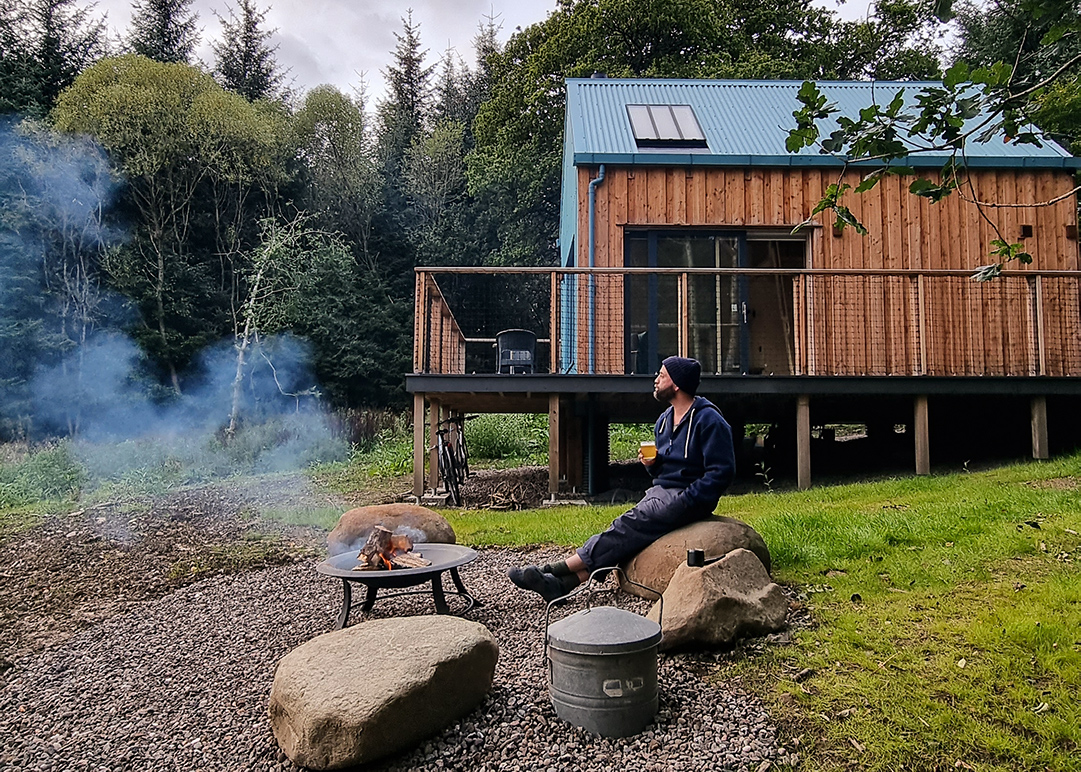
Where to stay in Clackmannanshire
Fancy spending time to explore?
These are affiliate links, thank you for supporting my site!
- Brucefield Estate – stay in a bothy on the the 1000-acre Brucefield Estate, home to three gorgeous luxury Scandi-style eco cabins – Tod, Mertrick and Brock. They also have a fabulosu holiday cottage – Slackbrae.
- Inglewood House and Spa – a four star spa hotel outside of Alloa, Inglewood House and Spa is a luxurious place to stay in Clackmannanshire.
- Dollarbeg Castle – stay in the The Tower, a luxury apartment with Dollarbeg Castle.
- Devon River Glamping Pods – go glamping at the Devon River Glamping Pods.
- Broomhall Castle Hotel – located outside of Menstrie, Broomhall Castle Hotel is a stunning old baronial castle in which you can stay.
Love from Scotland x
